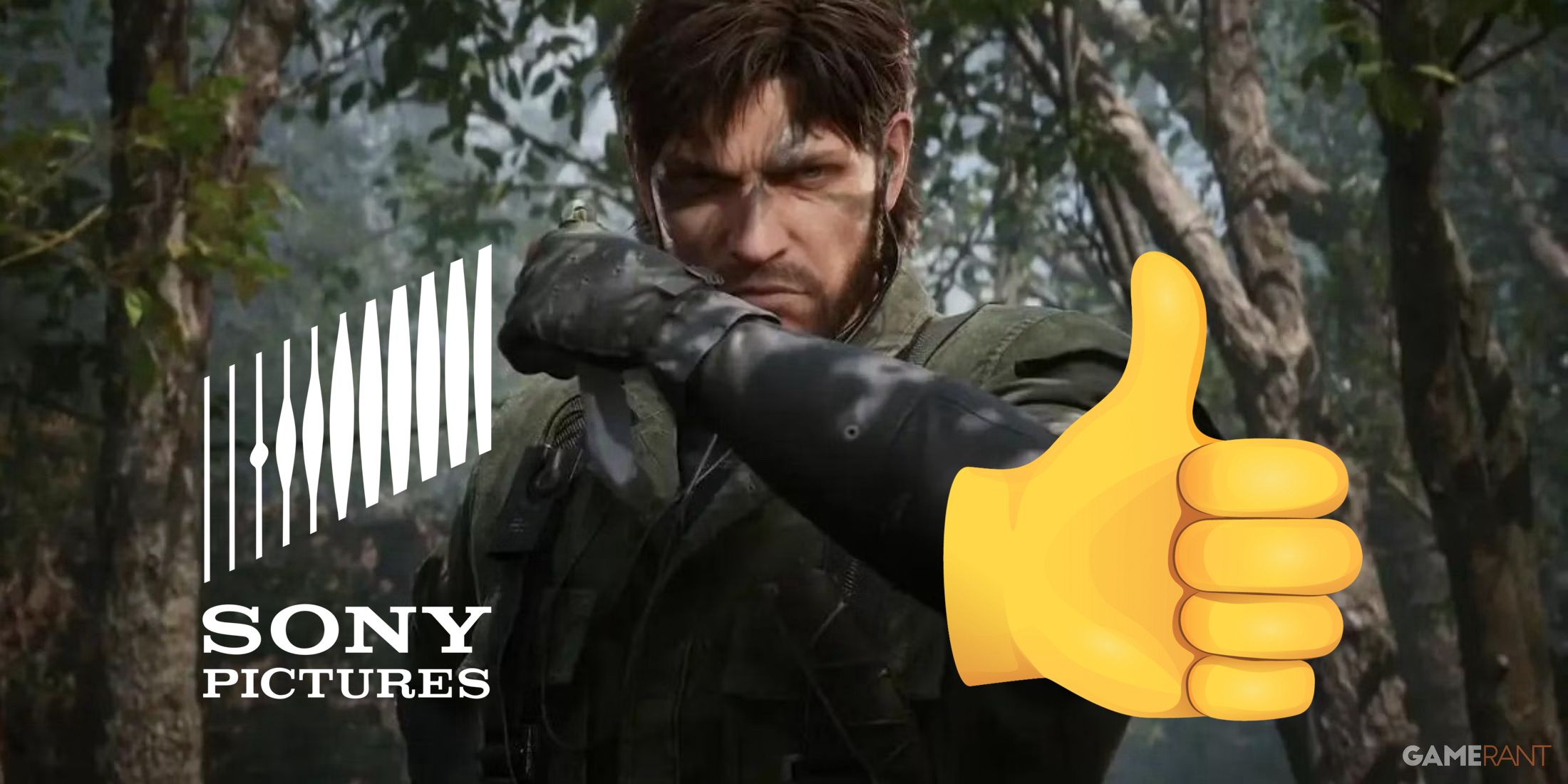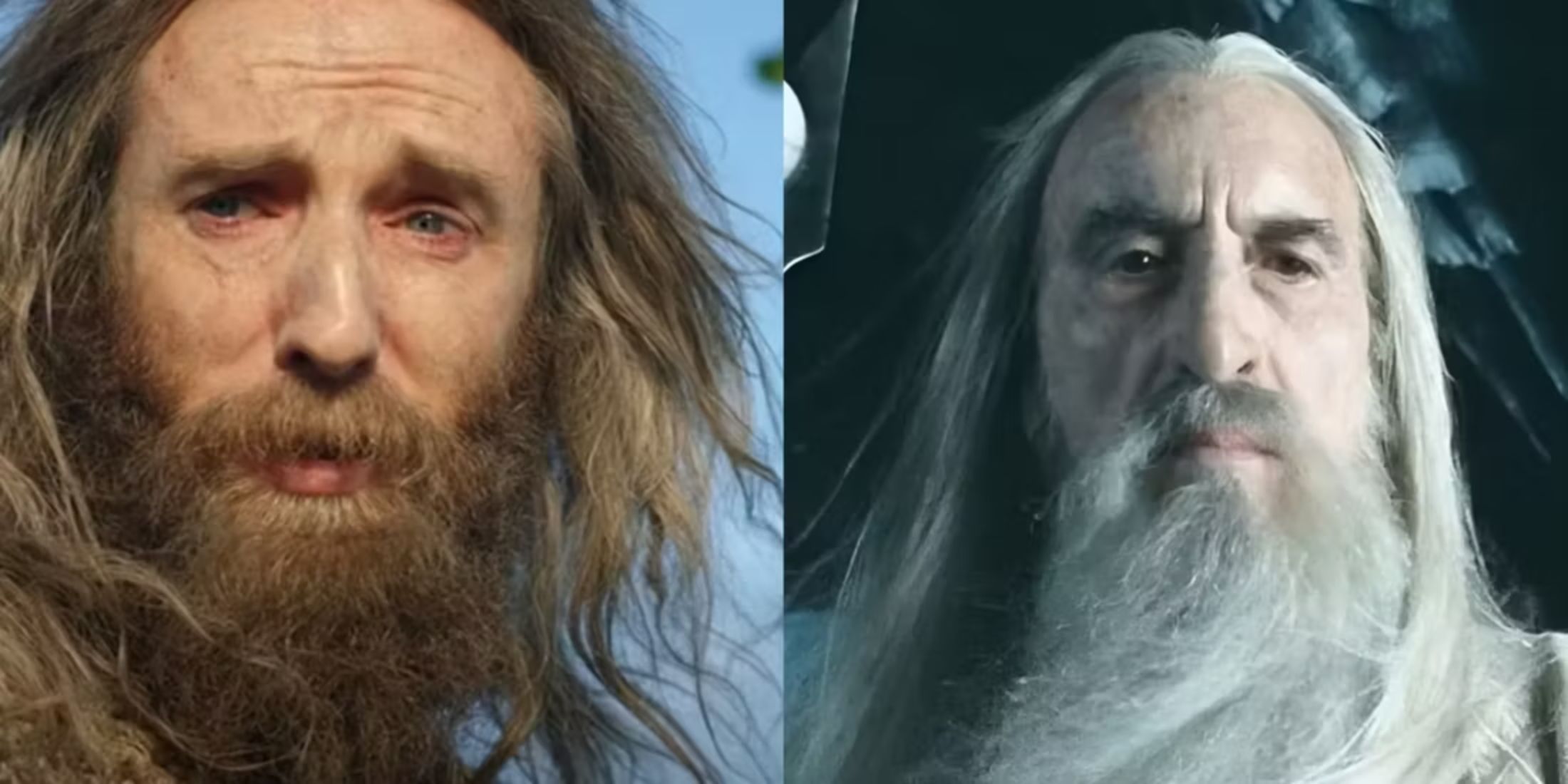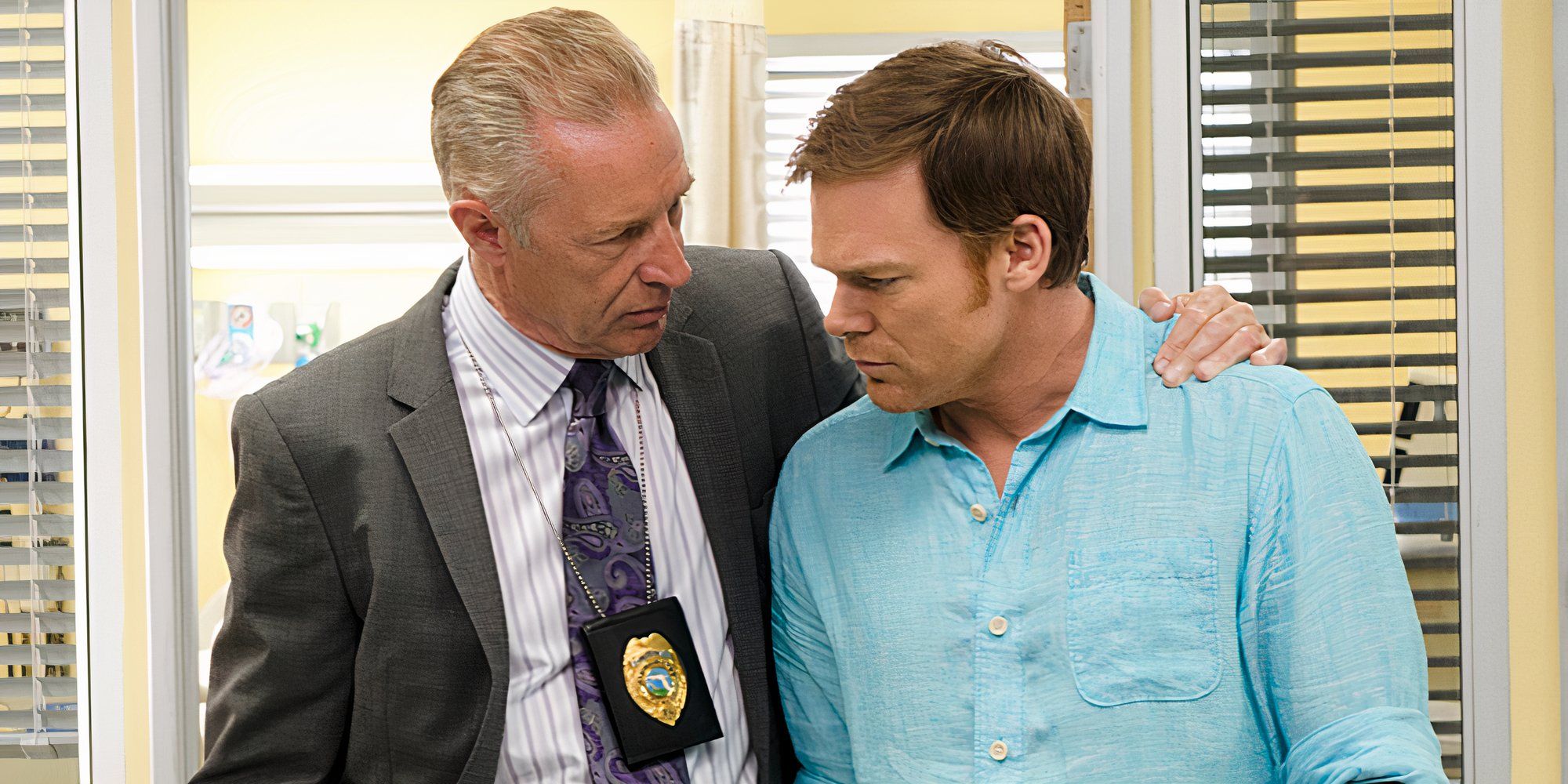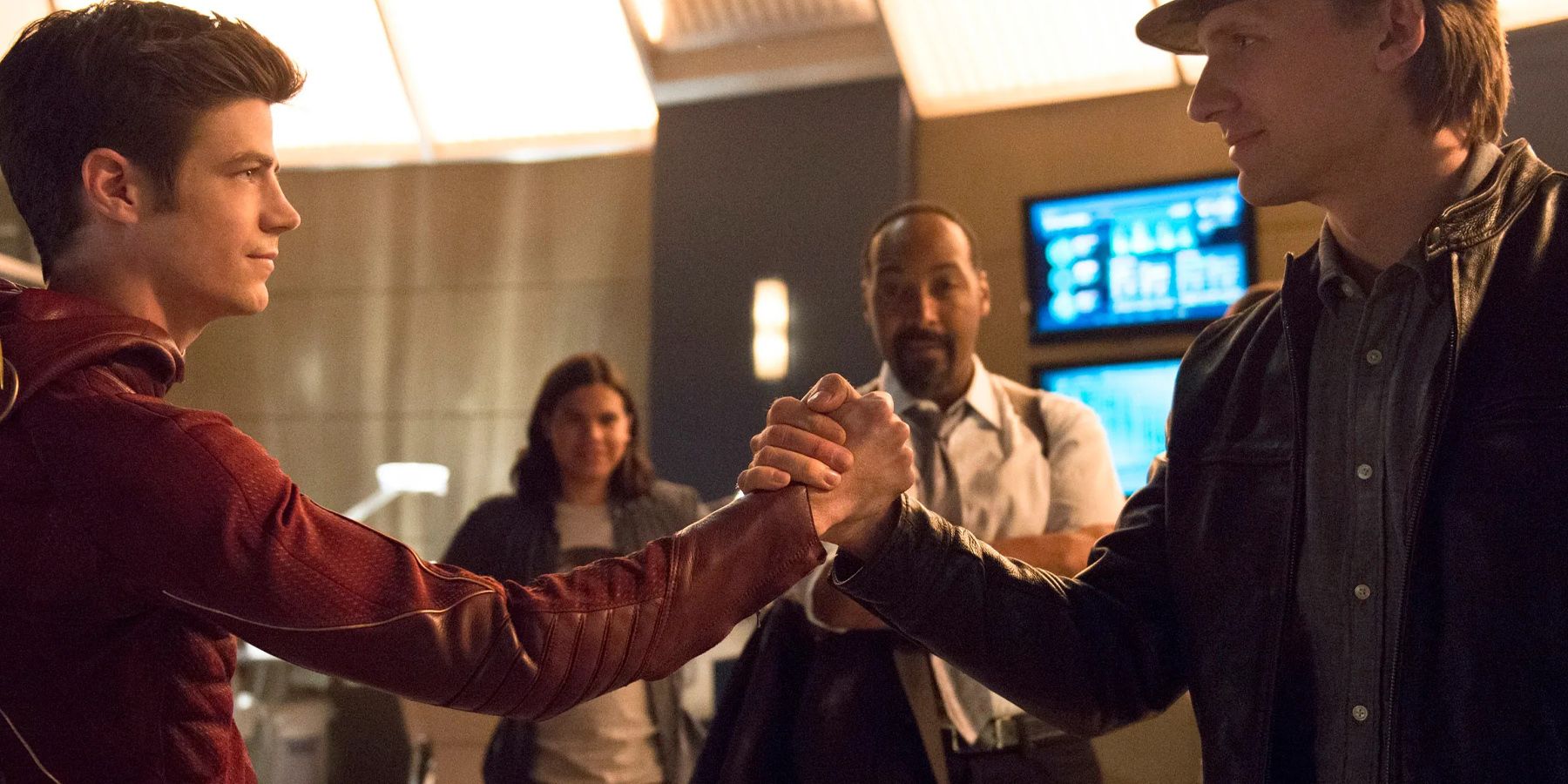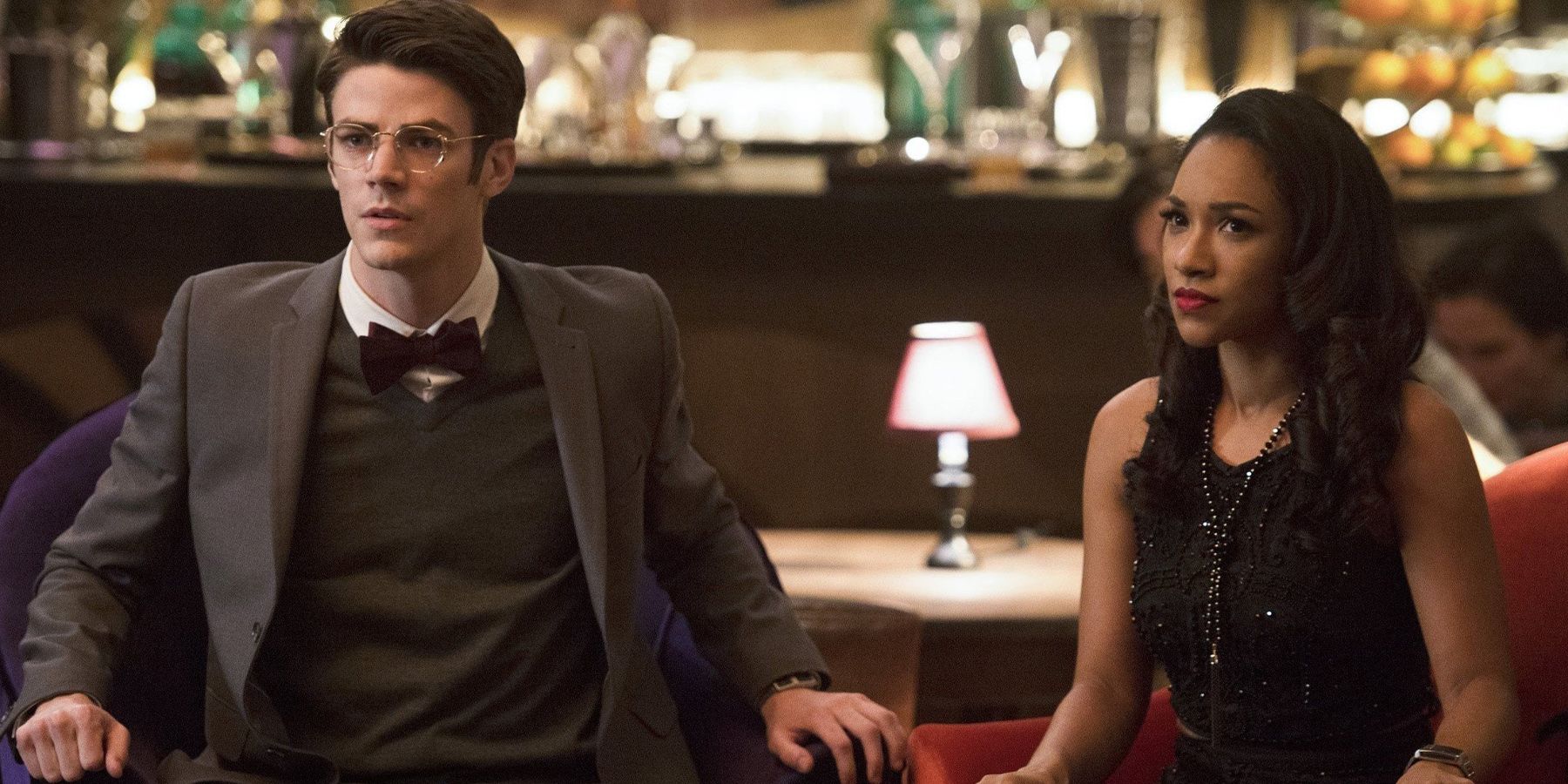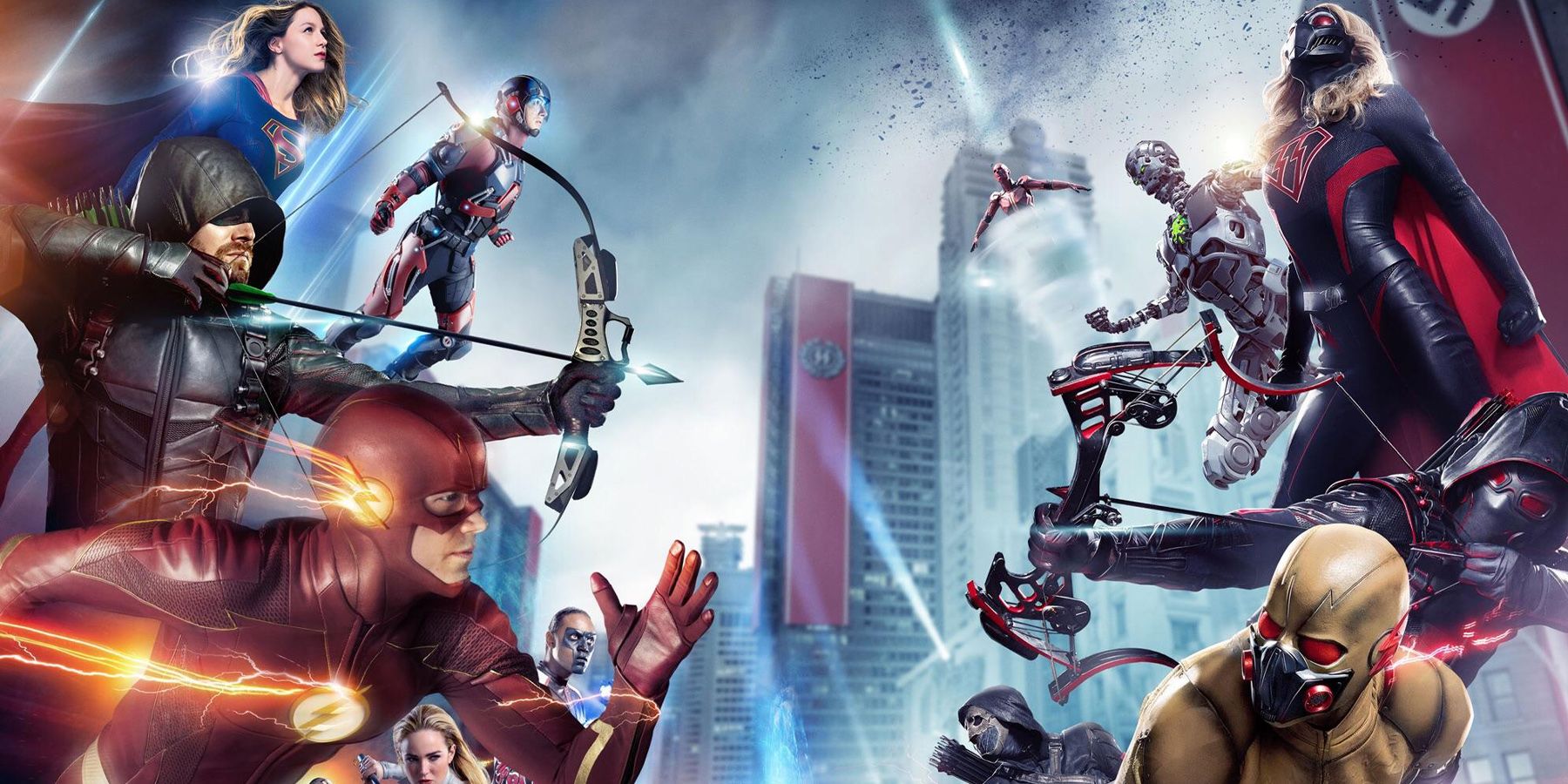The concept of the multiverse is certainly having a moment. With Doctor Strange in the Multiverse of Madness, the MCU is finally embracing a core trope of both Marvel and DC Comics—one which offers nearly endless possibilities for future exploration. It is not hard to see the appeal of multiverses to viewers; they are a sort of genre-within-a-genre, nesting speculative fiction within fantasy.
By introducing variety within an established framework, multiverses offer storytellers the opportunity to invigorate a tired premise (The Man in the High Castle), to subvert a well-known convention (Spider-Man: Into the Spider-verse), or to retcon a fractured franchise (X-Men: Days of Future Past). In one show, however, the multiverse did all three (and more!). By introducing the multiverse early and returning to it regularly, The CW’s The Flash was able to mine the concept for maximum story value, crafting some of the best episodes of the series.
In its sophomore season, The Flash introduced its multiverse right out of the gate, integrating Earth-2 into the overarching plot. Although the series was still new, there were two functional reasons to take on canon supervillain Zoom—and delve into the multiverse—so early in its run. First, Season 1’s serialized plot concludes with the defeat of the Reverse Flash, and thus the elimination of Dr. Wells; the only way to keep actor Tom Cavanagh on the show (to which he was indispensable) was to have him play a different character, Earth 2’s Harry.
This strategy actually proved so effective that The Flash retained it in subsequent seasons—giving Cavanagh the opportunity to flaunt his versatility (and his importance to the show). The second reason to introduce the multiverse was provided by another show altogether: when Supergirl moved from CBS to The CW, Kara Danvers transitioned into the Arrowverse as a breacher from Earth-38, bringing Supergirl in line with the established world of the CW shows.
For the first half of the season, however, Earth-2 exists chiefly as an engine of metahuman-of-the-week antagonists, until Barry and Harry must travel there to confront the purveyor of these metahumans, Zoom. Before they breach, however, Harry cautions Barry that the similarities they will encounter should not be mistaken for sameness with Barry’s own world.
This is an important lesson for any multiverse: although the denizens of another universe may have the same names and similar traits to those of the protagonists, the experiences of the alternate versions have shaped them in different ways—made them into different people. Earth-2’s Iris West is not “Barry’s” Iris; the woman he is in love with is an altogether different woman. Yet these people are also not disposable, and Barry’s feelings of conflict over their fates are a necessary struggle to remind the audience of that. Similarly, Barry’s opportunity to interact with a living version of Nora Allen remains poignant, despite the fact that this Nora Allen is not his mother.
The equal comedy and pathos The Flash confers on Earth-2 reflects how the episode pulls double duty in establishing Earth-2’s significance with regard to the characters and conflicts of Earth-1: while Earth-2 exists for the audience as a plot device, it cannot (and should not!) be perceived by the characters as plastic. The Flash carries this gravity throughout its first Earth-2 encounter, rendering the doppelgangers of Earth-2 as richly as those of Earth-1—they are different people, with different lives, but they are compelling in their own right (CSI Allen, in particular, is eminently watchable).
Moreover, their conflict is consequential and worthy of recognition, a point which Season 2 as a whole makes by tying the Zoom storyline into events on Earth-1—without completely subsuming them to the Earth-1 narrative. Harry continues to be Earth-2’s spokesperson, advocating for the quest that brought him to Earth-1 in a way that foregrounds the dire stakes faced by Earth-2. By the time Zoom’s real identity is revealed, the audience feels sympathy for the imprisoned ‘other Flash’, Jay Garrick. By the time Barry confronts Zoom, viewers are rooting for him to save Earth-2 as much as Earth-1.
In later multiverse episodes, The Flash fulfills the final (or first) function of multiverses—reinvigorating both stock premises and its own multiverse premise. Returning to Earth-2, The Flash pays homage in Season 3 to Planet of the Apes, with a two-episode arc that follows up on Grodd’s story—and that acknowledges Grodd as an independent character, whose sentience is more than just a moral quandary for unscrupulous experimenters. In Season 4, The Flash joins a multi-show Arrowverse crossover event that takes on Earth-X’s doppel-Nazis (as all speculative fiction must, eventually). Although that arc lacks the nuance of early Earth-2 episodes, it still shows an effort to acknowledge the personhood of Earth-X’s characters—to let those characters be the heroes in their world’s conflict, rather than just colonizing the alternate universe with the foreign saviors of Earth-1.
Doctor Strange, by contrast, made little effort to establish or reinforce the distinction between similarity and sameness—to the detriment of the film’s overall resonance. While it is reasonable for Scarlet Witch to confound the alternate versions of her children, the characters around her should have been positioned as counterpoints, offering perspectives that framed the multiverse outside of her delusion. Their failure to do so is the writers’ failure to orient the audience to the multiverse concept in a way that is meaningful.
As a result, the horrific deaths of Earth-838’s Illuminati read to the audience as callous slaughter because their selfhood has not been thoroughly established, and the conflicts of their world have been only casually exposited—they are presented as too remote from the characters the audience already cared about. If the MCU wants to continue exploring the multiverse (as they likely will; it is an essential part of the Marvel canon), writers will need to invest more in developing its characters…and in framing their struggles in a way that is accessible to the audience—and to the heroes the audience is ultimately trusting to save them.

